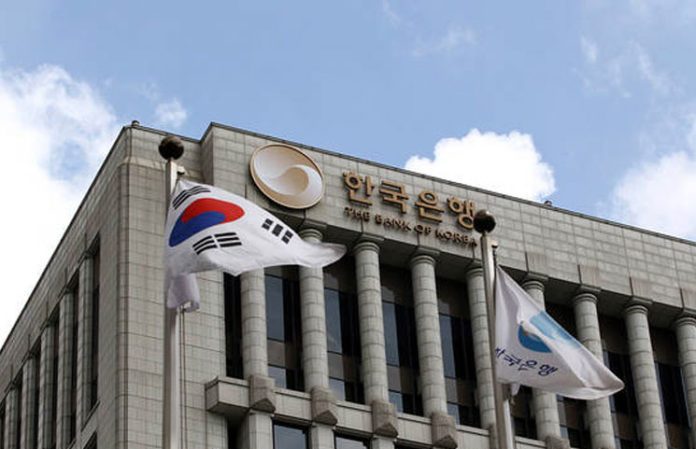
2. A further interest rate cut and quantitative easing by the BOK
To cut it short, the BOK should cut its base interest rate close to the zero-rate level with quantitative easing for Korea’s future growth path and financial market stability. As Fed Chairman Jerome Powell put it, Covid-19’s impact on the real economy is highly uncertain and “unknowable”. Based on a glimpse of recent economic indicators and data from major developed countries, the first-quarter economic growth is forecast to slow significantly due to the on-going community spread dragging down private consumption in Korea, in addition to manufacturing disruptions and declining demand in China. Although production disruptions could subside when China resumes production, the impact of slow consumption is expected to continue. On top of that, the demand contraction in the US and the euro area will slow Korea’s exports, which could linger into the third quarter. Hence, a full recovery is expected to come only after the fourth quarter with a rebound in external demand and in tourism and other industries particularly vulnerable to the outbreak. Assuming this year’s economic growth hitting the mid-zero percent range under such a grim growth path, the BOK’s estimated monetary policy reaction function based on past economic data implies Korea’s second-quarter base rate to be around the zero-percent range.
Although a consensus is reached on the need to loosen monetary policy to boost the real economy, there’re still questions about whether the monetary policy path would function well under today’s super-low interest rate environment. Also in doubt is whether the interest rate could be lowered further under the current effective lower bound. However, a cut in interest rates is de facto the only macroeconomic policy tool that could immediately deal with internal and external shocks, especially at a time when key decisions over massive fiscal expansion such as the second round of supplementary budget is hardly likely to be made time-wise. Also, the base interest rate forms a lower bound for short-term credits including commercial paper. Even if the credit path is not functioning properly due to financial unrest, a cut in the base interest rate could, albeit partially, contribute to stabilizing corporate financing. It’s also important to note that the low expectations about a further rate cut could possibly restrain a decline in the yields on long-term bonds including government bonds. With regard to the effective lower bound, there’re mounting concerns over capital outflows as the internal-external interest rate differentials are narrowing. The concerns are growing further with the won-dollar exchange rate fluctuating recently. However, such concerns could be ill-founded for two reasons. First, capital inflows to Korea, especially to the bond market, continued under the reversion in the internal-external interest rates of Korea and the US before the Covid-19 pandemic. Second, previous literature reports that the correlation between the internal-external interest rate differentials and capital outflows is insignificant.
When an interest rate cut seems insufficient to respond to adverse shocks in the real economy, quantitative easing is another monetary policy tool. Given the active political discussions on how to support vulnerable industries and citizens, Korea is expected to see an increase in government bond issuance that could finance the support packages after the general election. Major economies that already unveiled such massive financial support packages are already seeing a rise in their government bond yields. This partly explain the rise in Korea’s government bond yields despite its aggressive cut in the base interest rate. In response to such a market trend, the BOK purchased government bonds on March 19, 2020.
The fallout of the pandemic is highly likely to worsen Korea’s already large household debt as there will be more financing concerns in firms, more unemployment among wage workers, and more bankruptcy among self-employed and small business owners. Under the circumstances, it’s desirable to use quantitative easing to stabilize the market for corporate bonds and bank bonds. Due to Korea’s long-held fiscal stability, its government bond market is small given the size of its real economy. This makes it hard for Korea to follow the footsteps of other central banks to purchase a massive amount of government bond that will expectedly pump liquidity into the financial markets, ease credit restraints, and positively affect private sector portfolios. Nevertheless, a central bank’s quantitative easing declaration sends a clear signal to the market about its commitment to stabilize long-term interest rate, which makes the policy more effective. As can be seen in the case of the base interest rate, a cut in government bond yields will in effect lower the floor of the yields on corporate bonds and bank bonds. With regard to this, it’s worth benchmarking the yield curve control adopted by the Bank of Japan and the Reserve Bank of Australia (RBA). Unlike quantitative easing that specifies the size of government bond purchases, the yield curve control sets the purchase price with an aim to prevent the government bond yield from moving beyond a target level. By directly targeting the government bond yield, the yield curve control could effectively reduce the volatility in the market for corporate bonds and bank bonds that are highly correlated to government bond yields. Another benefit is its effect in reducing the risk of an yield increase that could occur as the government bond yield reaches its de facto floor due to the BOK’s base rate restrained to the effective lower bound. Recently, the RBA decided to control its 3-year government bond yield—an important benchmark in the Australian financial market—at the 0.25% level. It’s worth considering Korea targeting government bonds of a specific maturity, given that 3-year on-the-run corporate yields are a benchmark in Korea’s corporate financing market and 5-year bank yields are a reference rate in household loans. Certainly, a central bank’s explicit and direct role in managing the yield curve is not without risks. This could not only distort pricing of interest rates, but also inflate the balance sheets during the unlimited purchase of government bonds at a target price. Despite those potential setbacks, however, this is a policy alternative worth considering at a time when massive fiscal programs to combat the crisis-like recession are faced with an unintended rise in government bond yields. Such a side effect would not only undermines policy effects but also pose a threat to corporate and household debt.
Kang Hyun-Ju(2020.04.09) 코로나19 사태에 따른 외환시장 현황 및 시사점 2020-09호”
retrieved from http://www.kcmi.re.kr/publications/pub_detail_view?syear=2020&zcd=002001016&zno=1522&cno=5435






